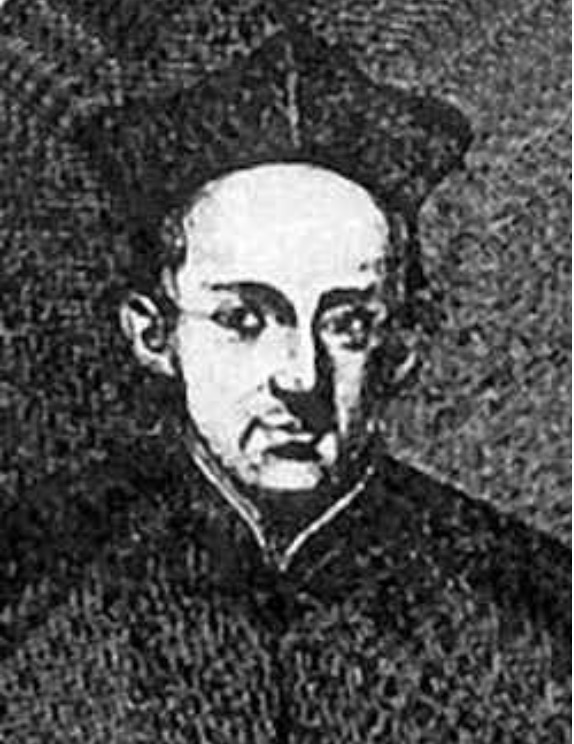
Giovanni Battista Riccioli was born on April 17, 1598 in Ferrara, Italy. At age 16, he entered the Jesuit Order and by age 22, he was immersed in the study of philosophy and theology in the Jesuit College in Parma. Around 1629, Riccioli became interested in science, and began observing the rates at which objects fall through space, the periods of pendulums of various lengths and the changing positions of the stars. In 1650 he became the first person to observe a binary star system–the stars Mizar and Alcor in the handle of the Big Dipper. He also discovered the shadows on Jupiter cast by its moons and later named lunar features such as the Seas of Tranquility that remain in use today.
In 1651, he published his treatise on astronomy titled Almagestum novum, in which he computed the angle of inclination of the earth’s equator with respect to the ecliptic, properties of various planetary orbits and times of the eclipses. Torn between his allegiance to the Catholic doctrine, asserting that the earth is stationary and the results of his experiments, he published in this treatise a multitude of arguments in favor and against the hypothesis that the earth moves around the sun. Reflecting on his passion for astronomy that was ignited around 1635, he recalled, “I could never extinguish the enthusiasm for astronomy once it arose in me.”
